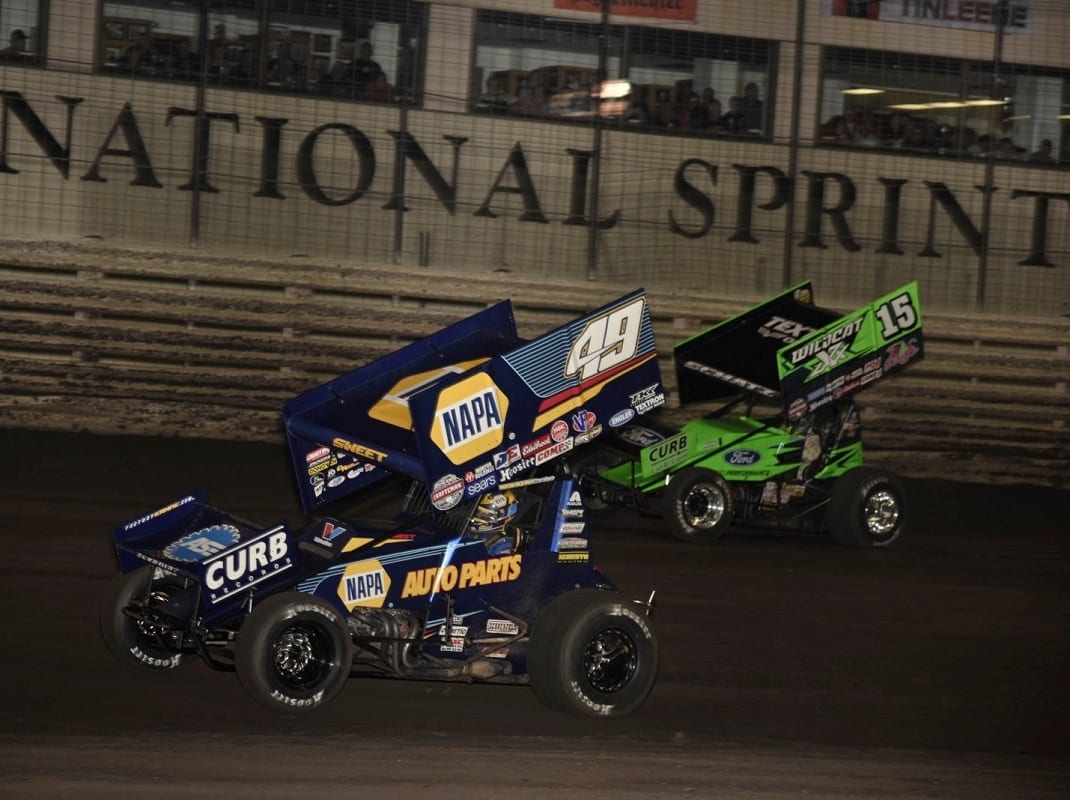Intensity. Pressure. Butterflies.
Those are some of the words professional sprint car drivers use when describing what it’s like to strap in and duke it out for $150,000, a huge trophy and the prestige that comes with winning the famed Knoxville Nationals.
“Everybody uses that cliché that it’s just another race,” said Brian Brown, who has 10 Knoxville Nationals feature starts and who strung together three straight second-place finishes from 2012-’14. “Your mentality changes based on where you’re at in your career. When you’re going as a young guy just trying to make the A Main, your mentality and goals are a little different than when you’ve really been in the hunt with the opportunity to win.
“You try to keep it normal mentally. That sounds good.”
It might sound good, but is it realistic?
“I’ve never won, so I don’t have the recipe for that,” said Daryn Pittman, a 16-time feature starter whose career-best outing of fourth came in 2016 when he started from the pole. “Whatever I’ve done in the past obviously hasn’t worked. Honestly, I still feel strongly that you can’t really view it any other way than any other race. I think putting more pressure on yourself and letting the event get to you can only be a hindrance to your performance. I distinctly remember doing a Winged Nation interview the year we sat on the pole and Jason Johnson was front row outside.
“They asked us a similar question and I said I’ll run 50 laps as hard as I can and treat it like any other race. Jason had the opposite answer and said he’d ran every lap through his head and had a vision of how it’s going to go. He went on to win and I finished fourth. Maybe that is a better approach.”
Four-time Knoxville Nationals winner Danny Lasoski knows how strong of a correlation there is between a driver’s mental status and the level of success he or she achieves during the biggest race on the winged sprint car calendar.
“The way I look at it 75 percent is mental, 20 percent is luck and the rest is everything you bring to the table,” he said. “I’m guilty of being the guy trying to reinvent the wheel. You think you have to do this or do that. I found that we had way more success if you just take a deep breath and understand you can only do what you can do and the rest is out of your control.
“I think I got better at it, but I never got over the whole thing,” Lasoski added. “You try to idle back, but you’re always sharp. Not on pins and needles, but you’re basically nobody’s friend that week. It’s the toughest week of all. Even now that I’m not racing it’s still tough. You find yourself being very short with everybody and being a little different.”
While drivers might not play head games by talking trash, Lasoski says everyone is always searching for the slightest advantage.
“I showed up there in I think it was 2003,” he said. “That was the first year they had where the nose wing could only be a certain length from your front axle. We built a front axle like a go-kart. We built it and ran it at the race in Oskaloosa. It was phenomenal. We could have our nose wing three or four inches ahead of everybody else. We get to our qualifying night and enough people bitched about it. It wasn’t against the rules, but Ralph Capitani came up to me and said, ‘Look, you have a great idea and I’d love to let you run it, but I’d rather you be upset with me than 120 other guys.’
“We went and won the race anyway. You look in the gray area and get an advantage. I look at everybody else’s car and they look at mine. If you see something that doesn’t look right, you go to the officials. I’m probably guilty of a couple of rules in the rulebook. Don’t fault me for trying.”
To continue reading this story, advance to the next page.
Mobil 1 – the best choice for your Truck or SUV. Learn more about Mobil 1 Truck & SUV oil and enter for a chance to win a Toyota pickup or SUV at dirtgiveaway.com.

